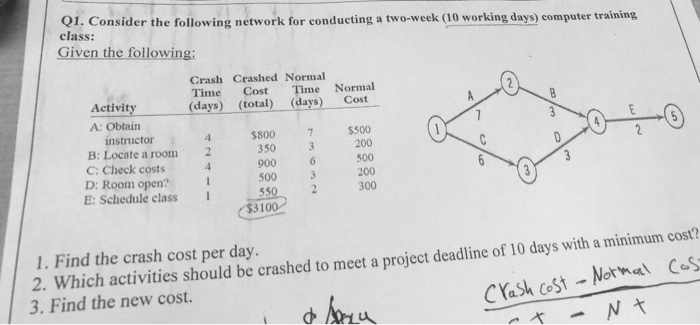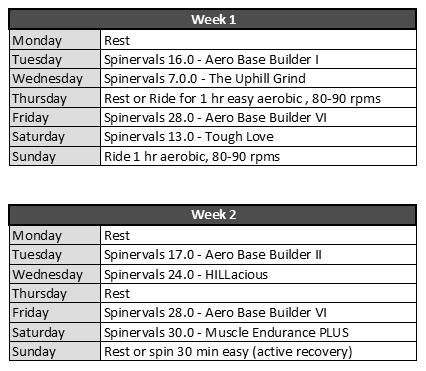How to register for a twoweek coaching program? In this article we will discuss the importance of opting out of a coaching program, the benefits of registering, and the cost of the coaching program. You can also find a list of important dates to keep in mind when you register for a twoweek coaching program. Then, we will address cancellation due to busy schedules and opt-out periods. If you are interested in the program, you can learn more by reading on.
Cancellation of coaching session due to busy schedules
The first step in cancellation is to notify your coach in advance. A client must give at least 24 hours’ notice of a cancellation before the coaching session. If he/she cancels less than 24 hours in advance, you may have the opportunity to reschedule the session. If the participant fails to give adequate notice, the session will be forfeited. Be sure to be as detailed as possible about your busy schedule.
How to register for a twoweek coaching program
If you’re interested in becoming a coach, you’ve probably heard about the benefits of training in a two-week coaching program. These sessions are held in classrooms, where you’ll meet other students and lead trainers, as well as additional support staff. These sessions are engaging, and will help you learn how to effectively coach others. You can also listen to recordings of the sessions to get more insight.
Cost of coaching program
There are several factors that you need to consider when pricing your twoweek coaching program. You should be clear on what you can and cannot offer your ideal client. The coaching business program you offer can be worth $10,000 or more. Instead of looking at other coaches’ prices, think about what YOU can offer them. You can charge premium prices for your coaching packages and then advertise them accordingly. The cost of a twoweek coaching program varies depending on the package.
For instance, a one-on-one coaching program might cost $197 per month or more. However, you can find cheaper online programs. Group coaching programs typically have fewer participants and cost only a fraction of the one-on-one program. Moreover, they require fewer hours. Generally, group online coaching programs cost 1/3 or less than one-on-one programs. However, you may have to choose between these two options based on the features you want to offer to your clients.
Pricing your coaching program depends on your own circumstances. If you’re selling it for yourself, don’t overprice it. While you may want to compete with the cheapest option, make sure that the quality of your course is not compromised. You’ll probably be able to provide individualized guidance and a place for your students to discuss their concerns and success. This way, you’ll be able to charge the right amount and be able to provide what you promise.
When choosing a price for your coaching, remember to think about the costs of not solving your problem. While losing 30 pounds is a great accomplishment, if you don’t reach your goal, you’ll likely have other problems. In addition to medical expenses, you’ll also lose money and time. If you don’t achieve your weight loss goal, the costs associated with this don’t end there. You’ll have other problems that cost you more money and time than you spent on the coaching program.

The price of your coaching program is a reflection of the value you’re providing your clients. Higher fees are generally accepted by business executives, who are willing to pay more for coaching than college students. However, it’s important to do some research so that you can determine your ideal client’s capacity for paying for your services. You can research other coaches’ fees in your niche so you’ll have an idea of what you can charge.
When selecting a cover, make sure it offers comprehensive coverage. There are some important elements to consider: Structure, Contents, and Costs. Below is an overview of the features of singleassessmentcover. You can also compare different policies side-by-side to see which one best fits your needs. If you’re looking for a policy for your business, here are a few things to consider. Hopefully, you can find a suitable plan.
Contents
The AGW SHA is leading a health information sharing conference. It will include case studies, presentations, interactive sessions, electronic voting, and facilitated panel discussions. Among the topics covered are the electronic single assessment and the use of clinical evidence to inform decision making. Among the speakers are Robin Stern, Director of Medical Mosaic Ltd. and Project Manager of the National Framework for Electronic SAP Implementation. Also speaking are Robin Guenier, Chair of Medix UK plc, and Michael Sargent, Managing Director of Swindon.
The Single Assessment Process (SAP) will require the collection of assessment information about older people, and it must be shared and stored securely. This information will form the Single Assessment Summary (SAS), also known as the Current Summary Record, and is part of the NHS Care Records Service. The cover contents will provide information about the process, a glossary of terms, and examples of how different agencies are adopting it. Once the information sharing process is complete, a paperless system will be used in a variety of clinical settings.
Structure
The structure of single assessment plans (SAP) is designed to facilitate efficient, person-centred assessments for individual patients. SAPs should reduce the use of duplicate assessments, support the individual’s health plan and identify the most effective interventions and outcomes. These plans require a lot of change, across staff groups, organisations, hospitals and the IT strategy of the organisation. They need to be flexible and able to respond to the new technologies emerging in the healthcare system.
The process of creating an assessment plan is difficult and time-consuming. Front-line practitioners are often resistant to collaboration and assessment sharing. Their involvement in this process is essential to a successful national SAP implementation. There are a number of reasons why this method is so important:
Costs
When it comes to HOA insurance, it’s important to know how much you’re going to pay for a single loss assessment. For example, 100 members of an HOA may not need as much coverage as a hundred homes in an individual subdivision. Since liability claims can result in millions of dollars in assessments, most experts recommend purchasing the highest loss assessment coverage limits possible. The costs of single assessments are spread out across a large number of people, and the higher limits can help you avoid huge liabilities.

Resources
There are a number of resources available to support the implementation of the single assessment of need (SAC). The Department of Health maintains an interactive glossary of terms and includes details of the NHS Connecting for Health and the Electronic Social Care Records Implementation Board projects. The resource also takes into account future plans for the use of the system in more healthcare settings, including multi-agency working. In addition, the department’s Do Once and Share SAP national project is discussed.
The Singing Assessment Process (SAP) was developed in response to the diverse welfare needs of older people. It is essential for agencies to work together to ensure effective assessment and care planning. Care is person-centred and holistic, centred on the whole person. The SAP emphasizes the need to involve service users in the assessment process. The aim is to ensure that information is shared and needs are considered together. Whether a service is offered for a short or long-term basis, it should involve the person receiving the service.
The EASYCare website also contains information about the single assessment and the resources required. The guide also provides information on the benefits and uses of the tool. Single assessments must be based on good evidence gathering, sharing of information, analysis, and timeliness. It should be proportionate to the needs of the child. A child’s disability should be taken into account when planning an EASYCare single assessment. A lead social worker should lead the meeting and ensure that all participants understand the goals of the assessment.
Participation of family members
In a single assessment coverage study, family members are not automatically included. In fact, some family members are reluctant to participate. For example, men are less likely to participate than women, and males are more likely to decline participation. For other reasons, family members may feel the burden of being involved would be too great, especially if the client has a history of domestic violence. In such cases, it is essential that family members feel comfortable raising any pertinent issues.
The study’s objective was to determine the factors that prevent family members from participating in palliative care research. Although this may seem like a trivial task, this problem can threaten the validity of studies, as well as raise questions about whether the sample is representative of the patient’s family. As such, this study explored barriers and facilitators for family members to participate in palliative care research. Then, it looked at possible methods to improve family members’ participation in such studies.
Planning
Implementing SAP in health services can be difficult. Implementation in Essex was particularly difficult, as front-line practitioners were reluctant to share their assessments and work collaboratively. Nevertheless, involving front-line practitioners is vital for achieving success in national SAP implementation. Listed below are some of the main barriers faced during SAP implementation. Read on to find out what you can do to overcome these. And don’t forget to share your experience with your colleagues.
A major obstacle to the widespread implementation of SAP is the lack of integrated IT systems, which are essential for enabling efficient data collection. Moreover, the government’s recent decision to cut funding for NHS IT systems threatens SAP implementation. Further, professional tribalism is an issue, preventing multidisciplinary working and collaboration. Despite the benefits of SAP implementation, it’s important to understand the limitations of the system. This is because implementing SAP in health care services can be expensive and complex.
The Single Assessment Process was introduced in 2001 and came into force in 2002. It was then implemented across England, with all areas adopting it from 2004. It aims to improve the quality of care for older people by bringing together health and social care services. As a result, it can improve communication of common assessment information. For example, health and social care services can better work together and develop a more person-centred care package for older people.








